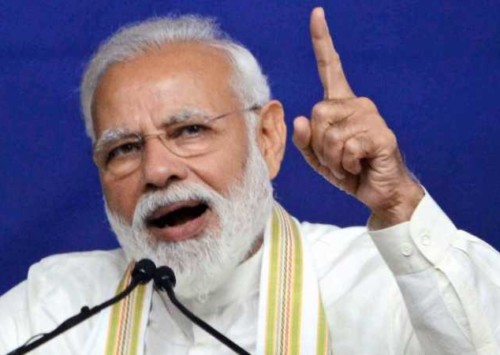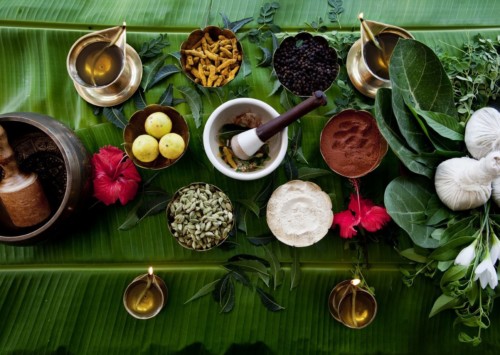The failing state of health care in India
Ahead of the final phase of polling for the 2019 general elections, matters like healthcare have taken a back seat. Not much seems to be done or said about the failing healthcare sector, as can be seen in various reports.
In a recent interview with the Indian express, Prime Minister Narendra Modi said “If someone says cleanliness is your legacy, I will say I got toilets built in a big way. Someone will claim preventive healthcare as legacy, I will remind you of Ayushman Bharat.”
So much for legacy that the Prime Minister’s speeches in March, during the campaigns for general elections 2019, considered healthcare to be the least important topic to talk about in his speeches. According to a recent report by an Indian media, out of the 24 recurring topics that Modi spoke about in his speeches, defence was the most mentioned whereas healthcare was down at the 21st place.
Even though it is not a major poll issue, the downfall of the healthcare sector cannot be dismissed. According to a recent report by the US-based Centre for Disease Dynamics, Economics and Policy (CDDEP), India is short of 600,000 doctors and two million nurses to take care of its patients. In India, there is one government doctor for every 10,189 people (the WHO recommends a ratio of 1:1,000) and the nurse to patient ratio is 1:483.
The ground reality
If one goes by the WHO norms, there should be one doctor amongst a population of 1,000. As per information provided by Medical Council of India, as on September 30, 2017, there are a total of 10,41,395 allopathic doctors registered under different state medical councils, out of which, only 1,14,969 (11 pc) are government doctors. However, some states like Tripura have a Medical Council with no doctors registered with it.
Government doctors in India are handling whopping levels of population, with each catering to 11,082 people. While nearly 70 pc of the Indian population resides in rural areas, more than 60 pc of the registered doctors are concentrated in urban areas, thus creating a highly skewed distribution and accessibility of basic health facilities. Also, the situation is even worse at the Public Health Centres (PHCs). In Chhattisgarh more than half of the PHCs function without a doctor. Other states that face shortage of trained medical practitioners in PHCs are — Madhya Pradesh (614), Uttar Pradesh (1689), Assam (500), Orissa (413), Bihar (211), Gujarat (65) and Punjab (45).
With the World Health Organization’s 2000 World Health Report ranking India’s healthcare system at 112 out of 190 countries. The percentage of total national budget on health also remains low in India. The federal government spends around one percent of its gross domestic product (GDP) on health, whereas India’s neighbour Nepal spends 2.3 pc of its GDP on healthcare while Sri Lanka spends two per cent. According to the Insurance Regulatory and Development Authority (IRDA), the Indian Government’s contribution to health insurance stands at roughly 32 pc, as opposed to 83.5 pc in the United Kingdom.
Last year the government announced world’s largest national health insurance programme as the Ayushmann Bharat health scheme, while there was a 2.1 pc decline in the allocation towards the National Health Mission, India’s largest programme for primary health infrastructure.
Development economist and activist Jean Dreze last year during an event termed the Ayushmann Bharat health scheme a “hoax” as it was actually not big as it was being claimed to be. “The budget (for the scheme) for this year is INR 20 billion. Even if it is spent, it’s less than INR 20 per person. It is projected as health insurance for 500 million people, but it is virtually nothing”, said Dreze, who helped draft the first version of the Mahatma Gandhi National Rural Employment Guarantee Scheme (MGNREGA).
Unusual schemes to compensate for the lack of doctors
Meanwhile the government wants to fix the staff shortages at public healthcares with Ayush (Ayurvedic, Yoga and Naturopathy, Unani, Siddha and Homeopathy) doctors. It even wants to allow dentists to practice modern medicine through a bridge course in order to tackle the shortfall of doctors in rural areas. The proposal is facing stern opposition from the Indian Medical Association (IMA) that has already received a nod from Prime Minister Office (PMO) on April 9, 2019. According to officials in the ministry of health and family welfare, the notion is to scale up the medical education in India.
“Why is the government opting to implement such a course? Earlier it sought to make exit exams compulsory after medical education; they could also provide medicos with jobs so that there is no dearth of doctors. But to train Ayurvedic doctors and dentists to practice allopathic medicine is not the apt solution,” says Dr Sanjeev Singh, secretary of the Telangana branch of the IMA. The organisation has rubbished claims by the Centre that introducing non-allopathic practitioners into the public healthcare infrastructure will help address the patient to doctor ratio.
“There is no shortage of doctors in the country. 63,250 MBBS graduates come out of 494 medical colleges of India. India has only 23,729 post graduate seats. The fact remains that the Government does not have the capacity to absorb rest of them,” said Santanu Sen, national president, IMA.
Unaffordable healthcare
According to CDDEP report, terminally ill patients suffering from treatable diseases in India have no access to life saving drugs or even to doctors who know how to administer them. Improperly trained medical staffs actually deprive patients from life saving drugs through their careless and unnecessary use of antibiotics. In India, 65 pc of health expenditure is out-of-pocket, and such expenditures “push some 57 million people into poverty each year,” says the report.
The biggest drawback in the healthcare sector in India is the sharp divide between the healthcare facilities provided for the rich middle class on the one side, and the deprived sections of the population on the other. For example, through the Central Government Health Scheme (CGHS) a mere 100,000 “platinum” card holders consisting of central government employees, pensioners and their families, members of Parliament (past and present), former governors, former vice-presidents and existing and former SC judges are the beneficiaries of CGHS.
To achieve the modest prescribed doctor-population ratio of 1:1000, India will need 2.07 million more doctors by 2030, says a report in Indian Journal of Public Health. However, with the government sparing just 1.3 pc of the GDP for public healthcare, in comparison to the global average of 6 pc, and the shortage of government doctors, people will continue to incur heavy medical expenditure in private health care system.













